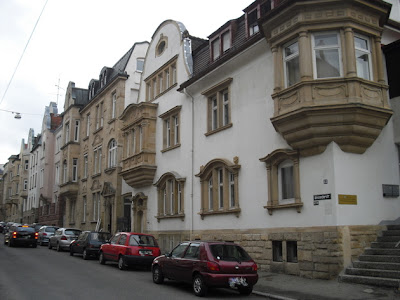The debate whether the U.S. standard of the DCI digital cinema answered the new to the cinema since around 1900 solved question format would have existed since 1998 between production and sales side shall be maintained (I had already in 1997 can be presented in Karlsruhe 2K projectors to the public), they will be in the year 2010 answered too late and must now also negative: DCI can not replace 35-mm film as an open format definition, because DCI just no open format definition knows - and also teaches the history of cinema that in addition to the 35-mm film and that of 16-mm format and just gave the 70-mm movie theater. This is not a question of "film resolutions" or the projection quality, but simply one of the cinema business operating plan, the various technical options (which may exist as a plurality of side by side) and current conditions from a technical could select option for the currently pending cinema concept of operations as appropriate. This possibility is deprived of the cinema industry by DCI. DCI cinema is optionslos in every way. For a pluralism approach is missing in the "push-through testing" of the German Film Producers' Association "Alliance of German producers - Film & TV", if such should be supported with funds corresponding element only DCI, digital cinema system. Apart from the dubious nature of the funding the task, because it pulls investment in cinemas loops in their intervals to those of the "PC Computer" recalls the 1980s and 1990s - and the impending shakeout of the cinema sector only cosmetically beautiful (because stretch of time) but is ultimately not able to prevent. Finally, it seems to me highly doubtful if the former member of the German Film Academy, even as a section leader of the Alliance of German producers - is film and television in his role as a lobbyist while still in the director board of the FFA is sitting and meet there (at least) corruption legislation tasks added. I rate the movie theaters and the remaining independent distributors urgently to continue and to develop new strategies for DCI-independent HD or 2K feature film with their own operational concepts. way that is, the coercive monopoly on technical solutions that serve all purposes only and not a livelihood pluralist cinema industry. Cinema as a space of experience to be reinvented, the DCI debate can provide an occasion. Who wants to operate movie theaters continue even as passion and business, if he is not master of the house? The 16-mm-Club cinemas also had the then market and their right to exist, especially if you can keep them historically good that the Subventionsfüllhorn via New German / Young German Film of the 1970s even as the first in the categories of cultural veracity awareness have co-created. And that especially means that the interface between content and technology to remain open. Only then would ever created the conditions Movie theaters continue to operate, especially when the whole "Suventionitis" should be cut back soon from macro-economic reasons, to zero. Joachim Polzer Links:
http://www.variety.com/article/VR1118028011?refCatId=3599 http://www.ag-verleih.de/?rubrik=positionen&position=05_digitalisierung http : / / www.filmproduzentenverband.de/index.php?option=com_content&view=articl ... : statement-of-ag-cinema-guild-ev-for-independence of art-film theater & catid = 2 & Itemid = 19 Newsflash http://www.kulturprojektor.de/2010/09/17/die-mar-vom -more-digital-cinema-vers ...
http://www.variety.com/article/VR1118028011?refCatId=3599 http://www.ag-verleih.de/?rubrik=positionen&position=05_digitalisierung http : / / www.filmproduzentenverband.de/index.php?option=com_content&view=articl ... : statement-of-ag-cinema-guild-ev-for-independence of art-film theater & catid = 2 & Itemid = 19 Newsflash http://www.kulturprojektor.de/2010/09/17/die-mar-vom -more-digital-cinema-vers ...
































